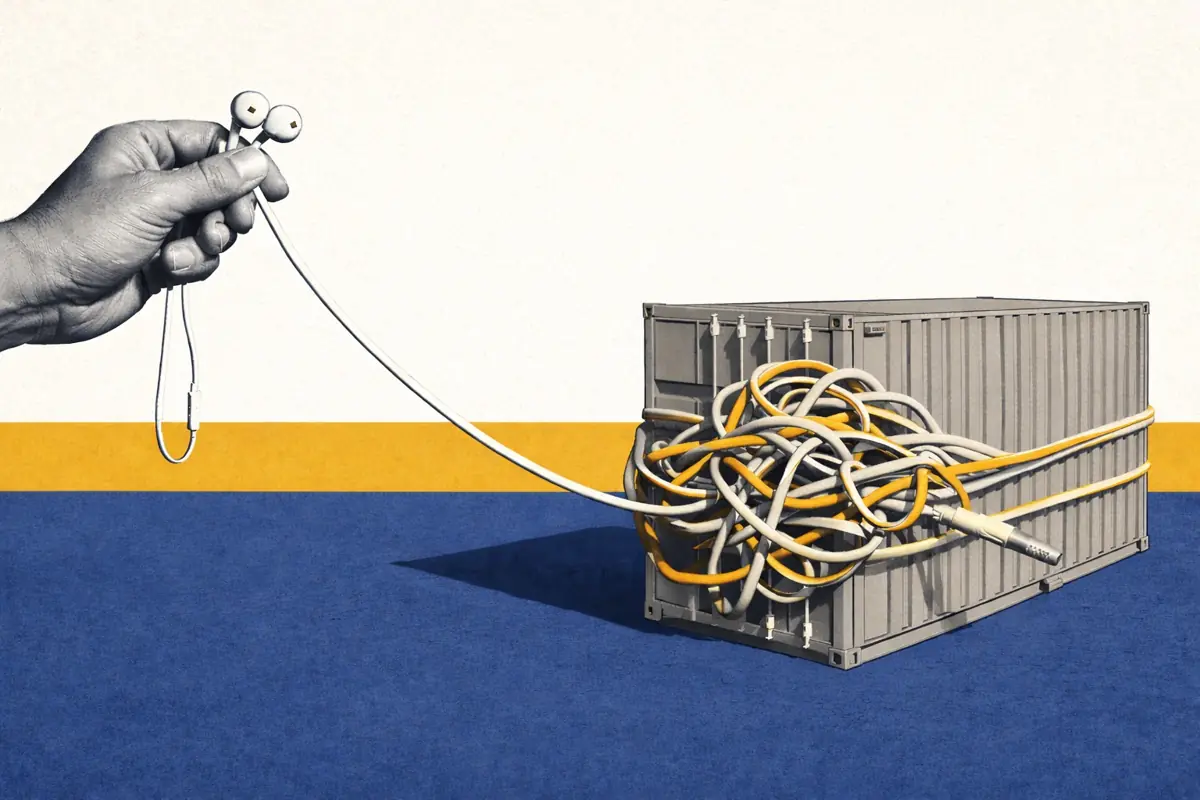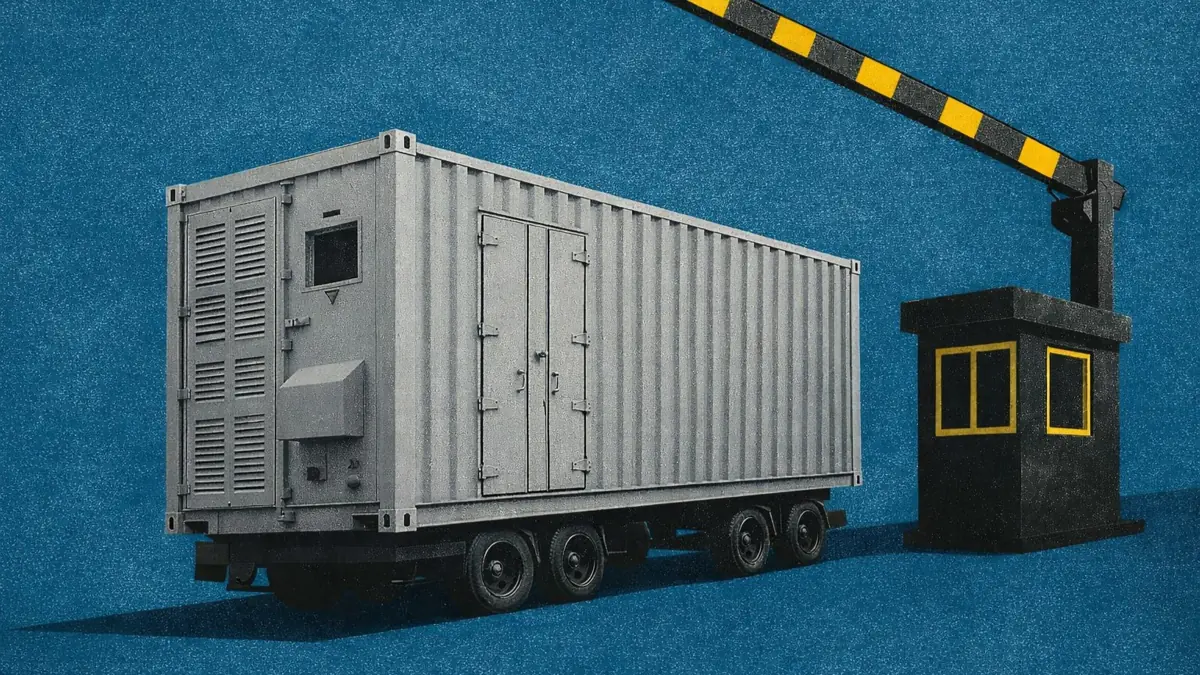PJM Q3 2025 BESS Livestream: Seven key insights
For the largest electricity market in the U.S., PJM’s utility-scale battery energy storage deployment has lagged behind, with just around 400 MW online today.
However, this will change in the next few years. Growing capacity market opportunities, improving energy arbitrage spreads, and queue reform underway all point toward tangible deployment of grid-scale storage ahead.
In our livestream “The State of Energy Storage in PJM”, Deeksha Anand and Brandt Vermillion explore how market fundamentals are shifting to support the next wave of BESS adoption.
You can find the link to the slides here, or embedded at the end of the article.
1. Thermal generators are still the largest producers, but renewables are coming
Thermal generation continues to anchor PJM’s supply stack, setting prices through most hours.
Nuclear and coal still make up 47% of total generation. However, this is down from ~70% in 2016, with gas filling most of the gap left by retiring coal generators in the last decade.
Renewables are also gaining ground, but with only 4-5 GW of midday solar output in 2024, their impact on PJM’s ~100 GW supply stack and daily price shapes remains limited - unlike markets like CAISO.
2. Storage deployment remains small today, but queue reform could unlock up to 7 GW by 2030
PJM’s utility-scale storage fleet totals just over 400 MW today, with average durations above 1 hour.
That’s a fraction of what ERCOT and CAISO have added - nearly 25 GW combined in the last 5 years.
Around 65% of existing capacity sits in just 3 states: New Jersey, Illinois, and Virginia. Growth has been driven by state storage procurement mandates, utility targets, and favorable incentive programs.
The main bottleneck to BESS adoption has been interconnection. Historically, more than 80% of projects entering PJM’s queue withdrew before reaching operations.
Before 2020, standalone batteries in PJM took 2 years on average to interconnect.
But for projects online after 2020, that stretched to 4 years, with some taking as long as 9 years.
Queue reform is the catalyst PJM’s storage market needs
The new first-ready, first-served cluster process replaces the old serial approach.
PJM is clearing the backlog through 3 interim cycles: Fast Lane, Transition Cycle 1 (TC1), and Transition Cycle 2 (TC2).
These 3 transition cycles together host close to 18 GW of queued battery capacity. By mid-2026, those studies will wrap up, and PJM will open its first fully reformed cycle.
If queue reform timelines hold, even with moderate attrition, as much as 7 GW of battery capacity could be online by 2030 - 17x today’s installed capacity.
3. 2025 revenues are up, but Regulation’s runway is short
2025 has been a strong year for PJM battery operators.
Gross revenues rose sharply from the previous two years, supported by increased volatility in real-time energy prices.
Scarcity pricing and weather-driven events - including June’s heat wave - drove record demand across the East Coast and spiked energy prices.
Reported below are cumulative gross revenues consolidated from FERC Electric Quarterly Reports, which do not account for battery charging costs.
Regulation remains the key revenue source, contributing three-quarters of total BESS revenues in H1 2025.
High clearing prices and performance-based payments have made Regulation a profitable revenue stream for batteries. However, the market is shallow and nearing saturation.
Once battery deployment exceeds the size of the Regulation market, price cannibalization becomes inevitable - as seen in CAISO and ERCOT.
That means Regulation revenues will likely start to taper off as more BESS projects come online.
4. High capacity market prices provide a foundation for BESS revenues
Meanwhile, capacity prices are surging, emerging as the next major revenue driver for BESS.
Recent auctions cleared at record highs, supported by rapid demand growth, fossil retirements, accreditation changes, and limited new supply.
At clearing prices near $300/MW-day, a 4-hour, 1 MW battery with a 50% Effective Load Carrying Capability (ELCC) in PJM’s base residual auction could earn around $55k/MW-year.
Even clearing the auction and securing capacity payments for just two to three years provides a solid foundation for early returns.
With demand growth accelerating on the back of data center development, and supply barely keeping up, capacity prices will stay high - sustaining strong returns for storage.
Most Fast Lane battery projects are 4-hour or longer - a shift from the short-duration regulation-focused builds in the past.
Developers are likely opting for longer duration to earn higher ELCCs and capacity payments - much like CAISO’s Resource Adequacy structure.
5. Arbitrage opportunities in PJM have improved in 2025 as load continues to grow and volatility returns
Energy arbitrage is becoming a more meaningful revenue stream for batteries.
Top-bottom (TB) price spreads have increased year-over-year, reflecting higher real-time volatility due to growth in peak demand and periods of more extreme weather where temperatures strayed from seasonal norms.
TB values indicate how much a battery can earn by buying energy when prices are low and selling when prices are high.
6. Arbitrage returns vary widely based on the node
Because energy is priced locationally - unlike ancillary services - the node where a battery sits has an outsized impact on its arbitrage revenue potential.
Considering most Fast Lane projects with signed interconnection agreements are 4-hour systems, TB4 spreads are the best proxy for expected returns.
Plotting 2024 TB4 spreads for Fast Lane projects, using their or the nearest proxy node, shows returns can vary from $28,000/MW/year to $104,000/MW/year.
Battery sites in Northern Virginia and Maryland stand out as key arbitrage hotspots, where congestion and concentrated demand from large data centers drive sharp intraday price swings.
In contrast, TB4 spreads are lower in New Jersey, reflecting limited transmission export capabilities.
PJM’s prices aren’t as volatile as CAISO or ERCOT yet.
But with more solar coming online and data center demand ramping, sharper price movements - and stronger arbitrage upside for batteries - are likely.
7. Massive load growth underlines strong fundamentals for high capacity prices moving forward
Demand in PJM is climbing faster than supply can keep up - pushing capacity prices to their highest levels in years.
Even after accounting for new projects expected to clear the reformed queue, the system still falls short of its reliability target over the next decade.
That widening gap highlights the growing need for additional capacity. Batteries are positioned to fill more of that role as coal and gas units retire and renewable generation increases.
With capacity prices high and volatility returning to the energy market, PJM now offers strong fundamentals for storage investments.
Full slides from the livestream are available below:







